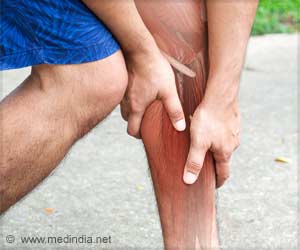Young people and children with high BMI showed signs of artery stiffness, a risk factor for cardiovascular disease.
- Kids and teens with high BMI showed signs of artery stiffness, a risk factor for cardiovascular disease
- Higher levels of visceral fat and arterial stiffness can contribute to heart problems in kids
- Dual energy X-ray absorptiometry (DXA) was used to measure levels of body fat in the children
Published in Pediatric Obesity, the study measured abdominal visceral fat levels and arterial stiffness in more than 600 children, adolescents and young adults.
Visceral fat is the fat found in the abdomen that infiltrates vital organs. Arterial stiffness forces the cardiovascular system to work harder to pump blood throughout the body.
The researchers found significantly higher levels of visceral fat and arterial stiffness in the overweight youth, suggesting that abdominal fat likely contributes to cardiovascular problems in kids.
“The stiffer the artery, the faster blood is going to move through those blood vessels, and that can be detrimental and overstress our system,” said Joseph Kindler, corresponding author of the study and an assistant professor of nutritional sciences in the College of Family and Consumer Sciences.
Studies of cardiovascular risks in youth are limited, but researchers believe the negative changes to the cardiovascular system that lead to disease and heart attacks likely begin in childhood and adolescence.
Arteries are stiffer in children with high BMI
The researchers used technology known as dual energy X-ray absorptiometry, or DXA, to measure levels of body fat in the children.
It’s a technique commonly used in the fields of bone and hormone research. And it’s becoming more common in body fat research because it gives scientists the same information as traditional scans. But it’s faster, less expensive and doesn’t require large doses of radiation like other scans do.
They also measured how long it took for participants’ blood to make it from the central part of the body to the lower limbs, a standard way of assessing arterial stiffness.
“One really important take-home message is that arterial stiffness, which predisposes children to cardiovascular disease down the line, looks to be the most pronounced in individuals who have a high BMI,” Kindler said.
Another concern is that children are increasingly being diagnosed with Type 2 diabetes, a condition previously only seen in adults. Being overweight is a big risk factor. Of the study’s participants, 145 had been diagnosed with the disease.
“It’s a very pervasive, scary condition in youth, even more so than in adults,” Kindler said.
“Many body systems tend to degrade at a more accelerated rate if the disease occurs during the growing years than in adulthood. This disease attacks the brain, the kidneys, the bones, the liver. It really heightens the need for understanding ways we can prevent disease.”
This study was co-authored by Simon Higgins, Babette Zemel, Philip Khoury and Elaine Urbina. It was funded in part by the Endocrine Fellows Foundation; the National Heart, Lung and Blood Institute; and a grant from the University of Georgia’s Obesity Initiative.
Source-Eurekalert
















